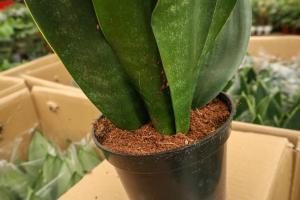Can You Plant Raspberry Plants in Pots?
Raspberries are delicious and healthy fruits that people love to eat. They are rich in vitamins, minerals, fiber, and antioxidants, and can be used in a variety of recipes, such as jams, jellies, pies, smoothies, and sauces. If you are a fan of raspberries and want to grow your own supply at home, you may wonder whether you can plant raspberry plants in pots. The answer is yes, you can! In fact, planting raspberries in pots can be a convenient and practical option for many gardeners.
Advantages of Growing Raspberry Plants in Pots
One of the main advantages of growing raspberry plants in pots is that you can control their environment more easily than if you plant them in the ground. You can choose the type of pot and soil that suit your preferences and climate, and you can move the pots around to follow the sun, shade, or shelter. This allows you to optimize the growing conditions for your raspberries, which can result in better yield and quality of fruit.
In addition, growing raspberry plants in pots can save you space and time. If you have limited outdoor space, a balcony, a terrace, or a patio, you can use pots to grow your raspberries vertically, by stacking them on top of each other, or horizontally, by arranging them in a row or a cluster. This way, you can enjoy fresh raspberries without taking up too much ground, and you can easily protect them from pests, diseases, or weeds.
How to Plant Raspberry Plants in Pots
Planting raspberry plants in pots is similar to planting them in the ground, but there are some differences that you need to pay attention to. Here are some steps to follow:
Choose a pot that is at least 18 inches wide and 12 inches deep, with drainage holes at the bottom.
Fill the pot with a good quality potting mix that is rich in organic matter, such as compost, peat moss, or aged manure.
Add a handful of slow-release fertilizer or bone meal to the mix, to provide nutrients for the raspberries throughout the season.
Dig a hole in the center of the pot, deep enough to support the roots of the raspberry plant without crowding them.
Place the raspberry plant in the hole, with the top of the root ball level with the surface of the soil.
Water the plant thoroughly, until the water runs out of the drainage holes, and check the soil moisture regularly, to avoid overwatering or underwatering.
Support the raspberry plant with a stake, a trellis, or a wire cage, depending on its growth habit and size.
How to Care for Raspberry Plants in Pots
Once you have planted your raspberry plants in pots, you need to take good care of them to ensure their health and productivity. Here are some tips:
Water the plants deeply and regularly, especially during hot or dry weather, but avoid watering the leaves or flowers, as this can cause fungal diseases.
Fertilize the plants every 4-6 weeks with a balanced, water-soluble fertilizer, according to the manufacturer's instructions.
Prune the plants in late winter or early spring, by removing any dead, diseased, or old canes, and leaving only the healthy, new ones, which will bear fruit in the next season.
Protect the plants from pests and diseases, by inspecting them regularly, and removing any signs of infestation or infection, such as holes, spots, or webs.
Harvest the fruit when it is ripe, by gently pulling it off the plant, and store it in a cool, dry place, or use it fresh or frozen, in your favorite recipes.
In conclusion, planting raspberry plants in pots is a fun and rewarding activity that can provide you with fresh and tasty fruit throughout the growing season. By following the above guidelines, you can ensure the success of your raspberry plants in pots, and enjoy the many benefits of homegrown raspberries.

 how many times do yo...
how many times do yo... how many planted tre...
how many planted tre... how many pine trees ...
how many pine trees ... how many pecan trees...
how many pecan trees... how many plants comp...
how many plants comp... how many plants can ...
how many plants can ... how many plants and ...
how many plants and ... how many pepper plan...
how many pepper plan...































